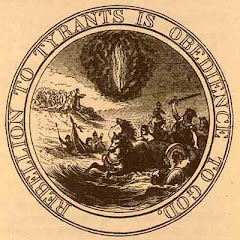I can't believe that Belize doesn't export more to the United States. The only things made in Belize I've ever seen here are souveniers brought back by tourists (usually textiles). I wanted to bring back more myself, but the markets were only really open for these kind of things on days that cruise ships came to town. So, this post is about things to try in Belize that are available everywhere else where you find real people.
Agricultural products abound, but they are largely consumed locally. At nearly every bus stop speed bump on some roads (except the Hummingbird Highway) you will see people sitting with roadside produce to sell. Most of this looks like they just picked it and bagged it in the wild, that they're doing it in order to supplement their income. It was nice because, when we were hungry, we could simply pull over in nearly any town and purchase produce for a pittance. I mean, where else can you get a bag of unknown fruit for $0.50? A freshly cut coconut for $1? There are so many trees laden with fruit in so many places, that so much of it simply falls to the ground and spoils. Considering the price of bananas, coconuts, pineapples, guava, etc, it's amazing that they don't capitalize on this and export more fresh fruits to the US.
Belize brews a great local brew. Everywhere you go, you see ads for Belikin, the Belizean beer with a Mayan motif on the logo. We first encountered it at Calypso, the restaurant by the Radisson, where a waitress described it as "close to a Heineken". Well, my buddy drank the Belikin stout and says it's far superior. And it's fairly cheap. It costs $1.50 per bottle, is available everywhere, and is almost always the same price (except at the Radisson where it's twice the price), which means it's state regulated. They ought to export this. It's a great beer, it's a huge potential for profit, and yet, I've never heard of Belikin. Plus the logo is pretty cool.
Of course, you can't talk about the Caribbean without discussing rum. My buddy walked into a liquor store and refused to pay the price they demanded for American whiskey and decided to try Traveler's brand rum. He liked it so much that he finished off three bottles. Plus, it's pretty cheap. I mean, the Caribbean is renowned for rum, so why aren't they exporting this? If they make a product that's superior, they could totally rake in the cash selling it overseas.
Granted, I don't drink, so some of this comes on the experience of my traveling friend, but when he stopped everywhere to replenish local produce or liquor, that's a pretty good testament that he enjoyed it. He never went after American products imported to Belize. I cannot conceive why Belizean products are not more widely available. I can only speculate. Perhaps it comes from the attitudes of the people and their government. Perhaps it comes from their infrastructure or from tariffs or due to corporate interests abroad. However, it's sad that, in order to enjoy what Belize has to offer you actually have to go there. Or is it?
Edit: 11 Feb 20
I forgot about the hot sauce. At the Calypso restaurant by the Radisson, we tried some hot sauce from Bertha's. You'll see billboards for it on the Hummingbird highway, and they run a small stand where they sell tomales along the roadside. You can buy the hot sauce which is carrot based for $2.50 for a small bottle or $15 for a coffee container full. It's wicked hot and wicked good. You have to order in advance. Bertha's granddaughters run the stand. It's pretty popular, and the tomales are pretty good too if you like tomales.
Edit: 11 Feb 20
I forgot about the hot sauce. At the Calypso restaurant by the Radisson, we tried some hot sauce from Bertha's. You'll see billboards for it on the Hummingbird highway, and they run a small stand where they sell tomales along the roadside. You can buy the hot sauce which is carrot based for $2.50 for a small bottle or $15 for a coffee container full. It's wicked hot and wicked good. You have to order in advance. Bertha's granddaughters run the stand. It's pretty popular, and the tomales are pretty good too if you like tomales.





